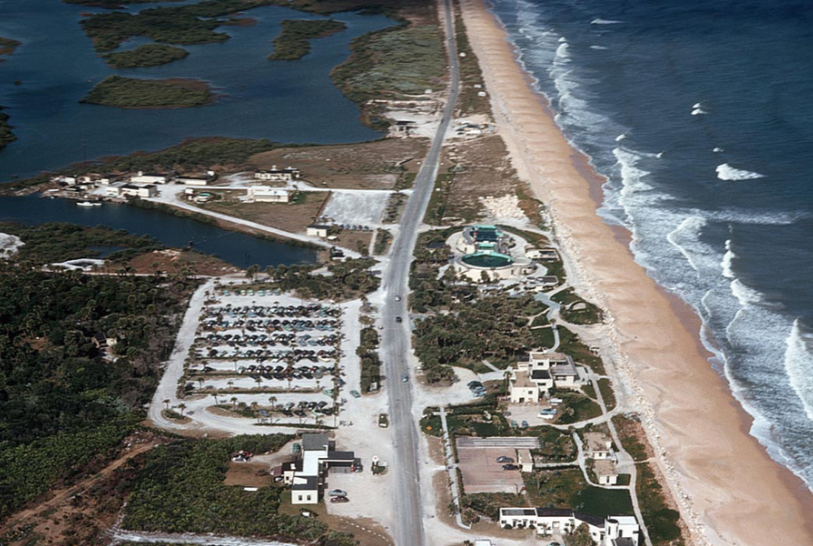Nestled along the picturesque coast of Florida, Marineland Dolphin Facility (only 2 hours by car from Orlando) has a storied history that spans over eight decades. Known for its groundbreaking contributions to marine science and its role in pioneering the concept of dolphin interactions, Marineland holds a special place in the hearts of both tourists and scientists alike. In this blog post, we’ll take a deep dive into the history of Marineland, exploring its evolution from a marine research facility to a premier dolphin experience destination.
Early Days as Marine Studios (1938-1950s)
Marineland’s story began in 1938 when it was founded as Marine Studios, a groundbreaking venture spearheaded by Cornelius Vanderbilt Whitney and designed by architect Samual Novits. Located on the beautiful coastline of St. Augustine, Florida, this facility was America’s first-ever oceanarium. The primary purpose of Marine Studios was to provide a unique setting for underwater film production. It featured a series of submerged viewing windows that allowed filmmakers to capture marine life in its natural habitat.
Film Production and Marine Research (1940s-1950s)
During World War II, Marine Studios played a vital role by providing underwater training for military divers. After the war, the facility transitioned back to its original mission of marine research and underwater filmmaking. It was during this time that the iconic “Creature from the Black Lagoon” was filmed at Marine Studios, further cementing its place in Hollywood history.
The Birth of Dolphin Encounters (1960s-1970s)
In the 1960s, Marineland Dolphin Adventure underwent a transformation. It shifted its focus from film production to marine education and interactive experiences with dolphins. This marked a pivotal moment in Marineland’s history as it became one of the first facilities to introduce the public to the world of dolphin encounters near Orlando and other central Florida locations. Visitors could now watch, swim with, and learn about these intelligent marine mammals up close.
Scientific Research and Conservation (1980s-1990s)
Throughout the 1980s and 1990s, Marineland continued to evolve, placing an increased emphasis on scientific research and conservation efforts. The facility’s experts conducted groundbreaking research on dolphin behavior, communication, and physiology, contributing valuable insights to the field of marine science.
Marineland also became a pioneer in promoting responsible and ethical interactions with dolphins. It implemented stringent protocols to ensure the well-being of the animals while providing visitors with unforgettable educational experiences.
Modern Era and Expansion (2000s-Present)
In the 21st century, Marineland Dolphin Adventure has continued to grow and adapt to the changing landscape of marine education and tourism. It expanded its facilities, offering guests a wider range of experiences, including dolphin encounters, interactive programs, and behind-the-scenes tours.
Today, Marineland remains committed to its mission of education, conservation, and responsible stewardship of marine life. The facility is an accredited member of the Alliance of Marine Mammal Parks and Aquariums, reflecting its dedication to the highest standards of animal care and welfare.
Conclusion
Marineland Dolphin Facility’s journey from a pioneering marine studio to a world-renowned destination for dolphin experiences and marine education is a testament to its enduring legacy. It has played a vital role in advancing our understanding of marine life while fostering a deep appreciation for these incredible creatures.
As Marineland continues to evolve and innovate, it remains a symbol of responsible tourism, education, and conservation in the world of marine facilities. Whether you’re a nature enthusiast, a history buff, or simply seeking a memorable and educational experience, Marineland Dolphin Facility invites you to be part of its rich history and ongoing commitment to the oceans and the animals that call them home.


